+Search query
-Structure paper
| Title | The structure of human sweetness. |
|---|---|
| Journal, issue, pages | Cell, Year 2025 |
| Publish date | May 2, 2025 |
 Authors Authors | Zhang Juen / Zhengyuan Lu / Ruihuan Yu / Andrew N Chang / Brian Wang / Anthony W P Fitzpatrick / Charles S Zuker /  |
| PubMed Abstract | In humans, the detection and ultimately the perception of sweetness begin in the oral cavity, where taste receptor cells (TRCs) dedicated to sweet-sensing interact with sugars, artificial sweeteners, ...In humans, the detection and ultimately the perception of sweetness begin in the oral cavity, where taste receptor cells (TRCs) dedicated to sweet-sensing interact with sugars, artificial sweeteners, and other sweet-tasting chemicals. Human sweet TRCs express on their cell surface a sweet receptor that initiates the cascade of signaling events responsible for our strong attraction to sweet stimuli. Here, we describe the cryo-electron microscopy (cryo-EM) structure of the human sweet receptor bound to two of the most widely used artificial sweeteners-sucralose and aspartame. Our results reveal the structural basis for sweet detection, provide insights into how a single receptor mediates all our responses to such a wide range of sweet-tasting compounds, and open up unique possibilities for designing a generation of taste modulators informed by the structure of the human receptor. |
 External links External links |  Cell / Cell /  PubMed:40339580 PubMed:40339580 |
| Methods | EM (single particle) |
| Resolution | 2.8 - 4.3 Å |
| Structure data |  EMDB-49605: Local refinement map of the human sweet taste receptor Venus Fly Trap domains (VFT) and upper-half of the Cysteine-Rich domains (CR) from the combined datasets  EMDB-49606: Local refinement map of the human sweet taste receptor lower-half of the Cysteine-Rich domains (CR) and transmembrane domains (TMD) from the combined datasets  EMDB-49607: Consensus map of the human sweet taste receptor composed of TAS1R2 and TAS1R3 GPCRs from the combined datasets EMDB-49608, PDB-9nor:  EMDB-49609: Local refinement map of the human sweet taste receptor Venus Fly Trap domains (VFT) and upper-half of the cysteine-rich domains (CR) from the PEG400 dataset  EMDB-49610: Local refinement map of the human sweet taste receptor lower-half of the Cysteine-Rich domains (CR) and transmembrane domains (TMD) from the PEG400 dataset  EMDB-49611: Consensus map of the human sweet taste receptor (TAS1R2 + TAS1R3) from the PEG400 dataset EMDB-49612, PDB-9nos:  EMDB-49613: Local refinement map of the human sweet taste receptor Venus Fly Trap domains (VFT) and upper-half of the Cysteine-Rich domains (CR) from the sucralose dataset  EMDB-49614: Local refinement map of the human sweet taste receptor lower-half of the Cysteine-Rich domains (CR) and transmembrane domains (TMD) from the sucralose dataset  EMDB-49615: Consensus map of the human sweet taste receptor (TAS1R2 + TAS1R3) from the sucralose dataset EMDB-49616, PDB-9not: EMDB-49617, PDB-9nou: EMDB-49618, PDB-9nov: EMDB-49619, PDB-9now: EMDB-49620, PDB-9nox: EMDB-49621, PDB-9noy: EMDB-70072, PDB-9o38:  EMDB-70073: Consensus map of the Human sweet taste receptor (TAS1R2 + TAS1R3) from the aspartame dataset |
| Chemicals | 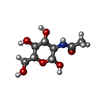 ChemComp-NAG: |
| Source |
|
 Keywords Keywords | MEMBRANE PROTEIN / Sweet / taste / receptor / GPCR / TAS1R2 / TAS1R3 / T1R2 / T1R3 / human / HYDROLASE/IMMUNE SYSTEM / HYDROLASE-IMMUNE SYSTEM complex |
 Movie
Movie Controller
Controller Structure viewers
Structure viewers About Yorodumi Papers
About Yorodumi Papers




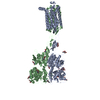

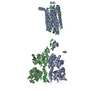







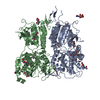

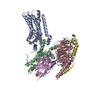

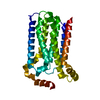

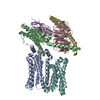
 homo sapiens (human)
homo sapiens (human)
